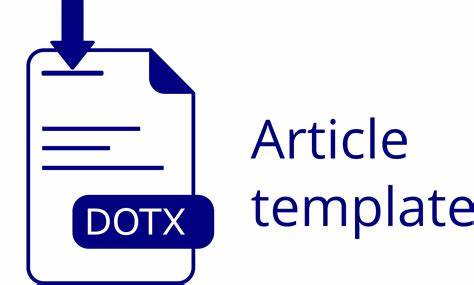Flatform Konseling Virtual ; Wujud Trasformasi Edukasi Terapeutik di Fasilitas Pelayanan Kesehatan
DOI:
https://doi.org/10.18592/alhiwar.v12i1.11498Keywords:
therapeutic education, virtual counselling, health servicesAbstract
Virtual counseling platforms provide the ability to maintain connectivity between healthcare providers and their patients. Patients can quickly receive diagnoses, enabling faster and more accurate responses to any changes in their health. This article explains the implementation and therapeutic education phases in healthcare facilities, particularly hospitals and community health centers, using virtual counseling platforms in telemedicine programs through a literature review and a descriptive approach. The policy for the therapeutic education process in virtual counseling platforms in healthcare facilities is divided into eight stages: assessing educational needs, medical record-keeping, disease diagnosis, medical equipment safety, pain management, diet and nutrition, rehabilitation techniques, and verification of understanding received. There are five therapeutic education topics: patient-oriented, disease-oriented, patient safety-oriented, rehabilitation material, and prevention material. In the virtual counseling platform, healthcare providers implement seventeen implementation actions in the therapeutic education process based on the educational phases. First, in the Pre-Interaction Phase, the implementation actions include self-evaluation, setting the stages of virtual counseling therapeutic education, and creating a written plan according to established SOPs. Second, in the Orientation Phase, implementation actions include introducing oneself, scheduling meetings (contracting), building rapport and trust, initiating a conversation, and closing the introduction session. Third, in the Working Phase, implementation actions involve increasing the patients' understanding and awareness of themselves, developing independence competencies, therapeutic actions, conducting health education, collaboration, delegation, and observation. Fourth, in the Termination Phase, implementation actions include making temporary terminations, final terminations with evaluation of actions, and contracting for follow-up care and treatment outcomes.References
Bastable, Susan B. “Sekilas Pandangan Tentang Pendidikan Dalam Perawatan Kesehatan,” Perawat Sebagai Pendidik; Prinsip-Prinsip Pengajaran dan Pembelajaran. Jakarta: Penerbit Buku Kedokteran EGC, 2002.
Braungart, Margaret M. dan Richard G. Braungart. “Teori Pembelajaran dan Praktik Keperawatan,” dalam Bastable, Susan B. Perawat Sebagai Pendidik: Prinsip-Prinsip Pengajaran dan Pembelajaran. Jakarta: EGC, 2002.
Bach, Shirley dan Alec Grant. Dommunication and Interpersonal Skills for Nurse. England: Learning Matters, 2009.
Hidayat, Taufik, “Integritas Kompetensi Interpersonal Islam; Adab Tenaga Kesehatan Muslim Melayani dan Memotivasi Kesembuhan Pasien,” Kandangan: Pustaka Labib, 2019.
Hasibuan, S. Y., Tutik, R., & Hariyati, S. (2019). Penggunaan Telehealth Pada Klien Dengan Posttraumatic Stress Disorder (Ptsd). Jurnal Keperawatan, 7(2), 58--67. https://ojs.uph.edu/index.php/NCJK/article/view/2314
Hardhiyani, Rizky. “Hubungan Komunikasi Therapeutic Perawat dengan Motivasi Sembuh pada Pasien Rawat Inap,” Developmental and Clinical Psychology Journal 2, no. 2 (2013): h. 56.
Iyer, Patricia W. Dokumentasi Keperawatan: Suatu Pendekatan Proses Keperawatan, Edisi 4. Jakarta: Penerbit Buku Kedokteran EGC, 2005.
Keliat, B. A. Hubungan Terapeutik Perawat-Klien. Jakarta: EGC, 2002.
Lovell, Brenda L., Raymond T. Lee dan Celeste M. Brotheridge. “Interpersonal Factors Affecting Communication in Clinical Consultations: Canadian Physicians’ Perspectives.” International Journal of Health Care Quality Assurance 25, no. 6 (2012): h. 467-482.
M. D. Rega, “The Process of Patient Education,” MEDSURG Nursing 2, no. 6 (1993): h. 477-479.
Narrow, B. Patient Teaching In Nursing Practice: A Patient and Family Centered Approach. New York: The Leange, 1979.
Qurotul Uyun dan Nita Trimulyaningsih, “Kebersyukuran dan Kesehatan Mental: Studi Meta-Analisis,” Jurnal Psikologi Klinis Indonesia 1, no.1 (2015): h. 43-57.
Richards, Scott dan Allen E. Bergin. A Spiritual Strategy for Counseling and Psychotherapy. Second Edition. Washington-DC, US: American Psychological Association, 2007.
Sari, O. K., Ramdhani, N., & Subandi, S. (2020). Kesehatan Mental di Era Digital: Peluang Pengembangan Layanan Profesional Psikolog. Media Penelitian Dan Pengembangan Kesehatan, 30(4), 337--348. https://doi.org/10.22435/mpk.v30i4.3311
WHO, Telemedicine Opportunities and Developments in Member State ; Global Observation for eHealth Series. Volume 2. Switzerlan: WHO Press, 2010
Yunindita Prasidya, “Major Indonesian Hospitals Go Digital to Tap into Growing Telemedicine Market,” The Jakarta Post, May 20, 2020, https://www.thejakartapost.com/news/2020/05/20/major-indonesian-hospitals-go-digital-to-tap-into-growing-telemedicine-market.html
Downloads
Published
How to Cite
Issue
Section
License
Copyright (c) 2024 Taufik Hidayat, Anita Ariani, Nadzmi Akbar, Amrullah

This work is licensed under a Creative Commons Attribution 4.0 International License.
Authors who publish with this journal agree to the following terms:
- Authors retain copyright and grant the journal right of first publication with the work simultaneously licensed under a Creative Commons Attribution License that allows others to share the work with an acknowledgement of the work's authorship and initial publication in this journal.
- Authors are able to enter into separate, additional contractual arrangements for the non-exclusive distribution of the journal's published version of the work (e.g., post it to an institutional repository or publish it in a book), with an acknowledgement of its initial publication in this journal.
- Authors are permitted and encouraged to post their work online (e.g., in institutional repositories or on their website) prior to and during the submission process, as it can lead to productive exchanges, as well as earlier and greater citation of published work.





